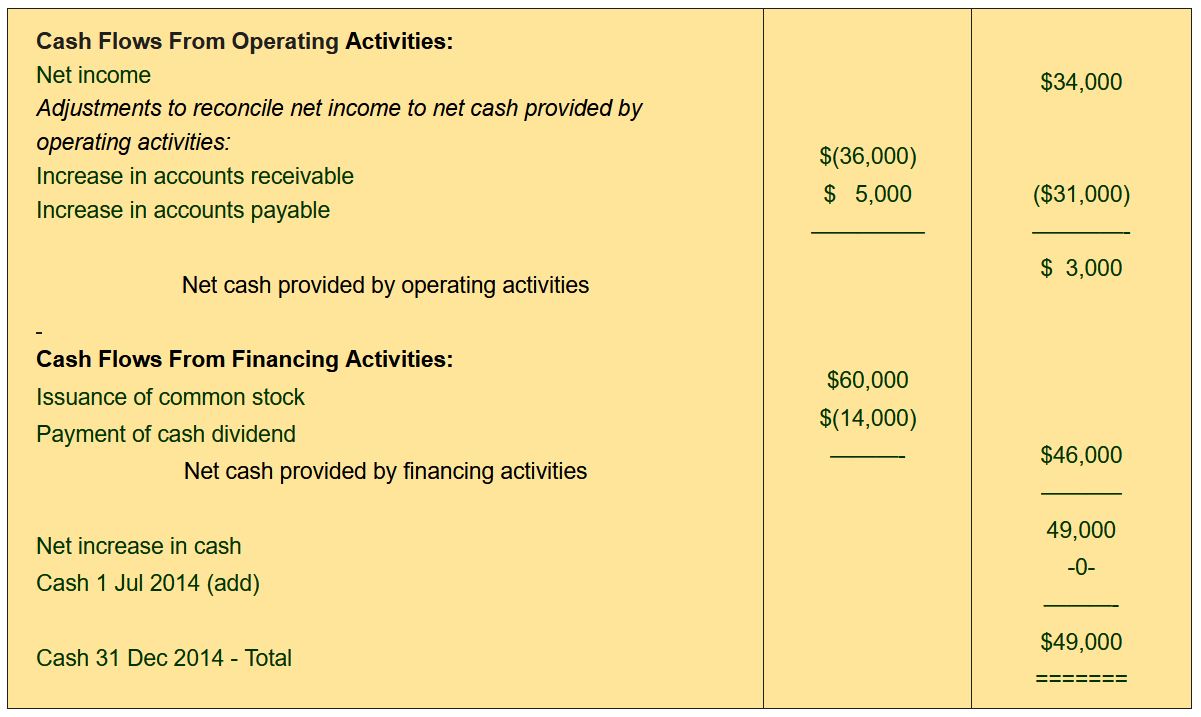

Finance
How To Get A Life Insurance Policy On A Parent
Published: October 15, 2023
Learn how to secure a life insurance policy on your parent and protect your family's financial future. Explore our comprehensive finance guide for step-by-step instructions.
(Many of the links in this article redirect to a specific reviewed product. Your purchase of these products through affiliate links helps to generate commission for LiveWell, at no extra cost. Learn more)
Table of Contents
- Introduction
- Step 1: Understand the Purpose and Importance of a Life Insurance Policy on a Parent
- Step 2: Determine if You Have Insurable Interest in Your Parent
- Step 3: Research Different Types of Life Insurance Policies
- Step 4: Calculate the Amount of Coverage Needed
- Step 5: Gather Required Documents and Information
- Step 6: Compare Life Insurance Providers and Policies
- Step 7: Apply for a Life Insurance Policy
- Step 8: Complete the Underwriting Process
- Step 9: Paying the Premiums
- Step 10: Review and Update the Policy as Necessary
- Conclusion
Introduction
Life insurance is an important financial tool that provides protection and peace of mind for individuals and their loved ones. While it is common to think of life insurance policies as being taken out on oneself, many people also consider getting a life insurance policy on a parent. This type of policy can be beneficial in a variety of ways, including providing financial support in the event of a parent’s passing.
In this article, we will explore the steps involved in getting a life insurance policy on a parent. From understanding the purpose and importance of such a policy to navigating the application process, we will provide you with a comprehensive guide that will help you make informed decisions.
Before we delve into the details, it is important to note that the decision to take out a life insurance policy on a parent should be made after careful consideration of various factors, including the parent’s age, health condition, and financial situation. It is also crucial to have open and honest conversations with your parent about this decision, as it involves their consent and cooperation.
Additionally, it is recommended to consult with a financial advisor or an insurance professional who can provide guidance tailored to your specific circumstances and needs. This article serves as a general overview to help you understand the process involved in getting a life insurance policy on a parent, but professional advice is essential to make informed choices.
Now, let’s begin our step-by-step guide on how to get a life insurance policy on a parent.
Step 1: Understand the Purpose and Importance of a Life Insurance Policy on a Parent
Before moving forward with getting a life insurance policy on a parent, it is crucial to understand why this type of coverage can be valuable and what its potential benefits are. While it may seem morbid or uncomfortable to contemplate the loss of a parent, being financially prepared for such an event can be essential for your own financial well-being and the well-being of your family.
One of the primary purposes of a life insurance policy on a parent is to provide financial support in the event of their passing. This support can cover various expenses, including funeral costs, outstanding debts, medical bills, and estate taxes. By having a life insurance policy in place, you can ensure that these financial responsibilities are taken care of without burdening yourself or your family during an already challenging time.
Furthermore, a life insurance policy on a parent can also offer income replacement. If your parent contributes financially to the household or provides support for you or other dependents, their passing could have significant financial implications. A life insurance payout can help replace the lost income, allowing you and your family to maintain your standard of living and cover ongoing expenses.
Additionally, a life insurance policy on a parent can serve as a way to preserve and pass on an inheritance. It can provide a financial safety net for both the parent and their beneficiaries, ensuring that any debts or final expenses are taken care of and that the remaining funds can be distributed to the designated individuals or entities.
Moreover, having a life insurance policy on a parent can offer peace of mind and emotional support. It provides assurance that the financial aspects of their passing will be handled smoothly, allowing you to focus on grieving and healing without the added stress of financial burdens.
It is important to note that the purpose and importance of a life insurance policy on a parent may vary depending on individual circumstances. It is crucial to assess your specific needs and financial situation to determine the appropriate coverage amount and type of policy.
Now that you understand the purpose and importance of a life insurance policy on a parent, let’s move on to the next step: determining if you have insurable interest in your parent.
Step 2: Determine if You Have Insurable Interest in Your Parent
Insurable interest is a crucial factor when it comes to taking out a life insurance policy on someone. It refers to the financial stake or relationship that justifies the need for insurance coverage. In the case of getting a life insurance policy on a parent, determining if you have insurable interest is essential.
In most jurisdictions, having a direct financial interest or being financially dependent on your parent is considered sufficient justification for insurable interest. This can include instances where your parent provides financial support for you, such as paying for your education, housing, or other expenses. It can also include situations where you have a financial investment in your parent’s well-being, such as co-owning property or being a beneficiary of their estate.
Having insurable interest is important because it demonstrates that the policyholder stands to suffer a financial loss if the insured person passes away. It prevents individuals from taking out life insurance policies on strangers or people with whom they have no financial connection.
To determine if you have insurable interest in your parent, consider the following questions:
- Are you financially dependent on your parent?
- Does your parent provide financial support or contribute to your household expenses?
- Do you have a joint financial investment, such as owning property together?
- Would your parent’s passing result in a financial loss for you?
If you can answer “yes” to any of these questions, it is likely that you have insurable interest in your parent. However, it is always recommended to consult with an insurance professional or legal advisor to ensure that you meet the specific requirements set forth by insurance regulations in your jurisdiction.
Having a clear understanding of your insurable interest is essential before moving forward with the process of obtaining a life insurance policy on a parent. It is an important consideration that helps establish the legitimacy and validity of the policy.
Now that you have determined if you have insurable interest in your parent, we can proceed to the next step: researching different types of life insurance policies.
Step 3: Research Different Types of Life Insurance Policies
Now that you have established your insurable interest in your parent, it’s time to explore the various types of life insurance policies available. Understanding the different options will help you choose the one that best fits your needs and financial goals.
There are two main types of life insurance policies: term life insurance and permanent life insurance.
Term Life Insurance:
Term life insurance provides coverage for a specific duration, typically ranging from 10 to 30 years. It offers a death benefit if the insured person passes away during the policy term. Term policies are typically more affordable compared to permanent life insurance, making them an attractive option for many individuals. However, it is important to note that term life insurance policies do not accumulate cash value and will expire at the end of the term.
Permanent Life Insurance:
Permanent life insurance provides coverage for the entire lifetime of the insured person, as long as the premiums are paid. It offers a death benefit as well as a cash value component that accumulates over time. Permanent life insurance policies can be further divided into two categories: whole life insurance and universal life insurance.
Whole life insurance: Whole life insurance provides a guaranteed death benefit and builds cash value at a fixed premium rate. It offers lifelong coverage and allows the policyholder to access the accumulated cash value through withdrawals or loans. Whole life insurance is known for its stability and guarantees.
Universal life insurance: Universal life insurance also offers a death benefit and a cash value component. Unlike whole life insurance, universal life insurance provides flexibility in premium payments and death benefit amounts. It allows policyholders to adjust their premiums and death benefits over time based on their financial situations. Universal life insurance policies can also offer the potential for investment growth through the cash value component.
While term and permanent life insurance are the primary types of policies, there may be additional variations or combinations available from different insurance providers. It is essential to research and compare the features, benefits, and costs of different policies to find the one that aligns with your specific needs and financial goals.
Consider factors such as the coverage amount, premium affordability, policy duration, flexibility, and potential for cash value accumulation. Assessing these aspects will help you make an informed decision about the type of life insurance policy that is most suitable for you and your parent.
Once you have a clear understanding of the different types of life insurance policies available, you can move on to the next step: calculating the amount of coverage needed.
Step 4: Calculate the Amount of Coverage Needed
When obtaining a life insurance policy on a parent, it is essential to determine the appropriate amount of coverage. This will ensure that the policy adequately meets the financial needs and obligations that may arise in the event of their passing.
To calculate the amount of coverage needed, consider the following factors:
- Final Expenses: Take into account the costs associated with funeral and burial or cremation services. These expenses can vary widely depending on personal preferences and location.
- Outstanding Debts: Consider any outstanding debts your parent may have, such as mortgages, loans, credit card balances, or medical bills. The insurance coverage should be sufficient to cover these financial obligations.
- Income Replacement: If your parent provides income that supports you or other dependents, calculate the amount needed to replace that income in the event of their passing. This can help maintain your standard of living and cover ongoing expenses.
- Estate Taxes: Depending on the value of your parent’s estate, there may be estate taxes to consider. Consult with a tax professional to determine if this applies in your situation and factor in the potential tax liability.
- Additional Financial Goals: Consider any other financial goals you or your parent may have, such as funding education expenses, paying off a mortgage, or providing an inheritance. These goals can also impact the amount of coverage needed.
It is important to take a comprehensive approach when calculating the coverage amount to ensure that all potential financial obligations are accounted for. Keep in mind that the goal is to provide financial stability and security during a challenging time.
Consulting with a financial advisor or insurance professional can be invaluable during this step. They can help you evaluate your financial situation, understand your needs, and provide guidance on determining an appropriate coverage amount.
Be sure to reassess the coverage amount periodically as circumstances change. Life events such as marriages, births, or changes in financial responsibilities may warrant adjusting the coverage to ensure it remains sufficient.
Once you have determined the amount of coverage needed, you can proceed to the next step: gathering the required documents and information.
Step 5: Gather Required Documents and Information
Obtaining a life insurance policy on a parent requires gathering specific documents and information. This step is crucial to ensure a smooth and efficient application process. By being prepared with the necessary documentation, you can avoid delays or complications.
Here are some essential documents and information you will likely need to gather:
- Proof of Identity: Provide a copy of your parent’s identification, such as a valid driver’s license or passport. This helps establish their identity and age.
- Health Information: You will need to provide detailed information about your parent’s health history, including any pre-existing medical conditions, medications, and previous surgeries or treatments. This information helps insurance providers assess the risk and determine the premium rate.
- Medical Records: In some cases, you may be required to provide copies of your parent’s medical records to support the information provided in the application. This can include recent doctor’s reports, test results, or hospitalization records.
- Financial Information: Prepare information about your parent’s financial situation, such as their income, assets, and debts. This helps insurance providers assess the insurable interest and determine the coverage amount.
- Beneficiary Information: Identify and provide the necessary details of the beneficiaries who will receive the proceeds from the life insurance policy in the event of your parent’s passing. This includes their full names, addresses, and relationship to the insured.
- Policyowner Information: As the policy owner, you will need to provide your own personal information, including your full name, contact details, and relationship to the insured.
It is essential to ensure the accuracy and completeness of the gathered documents and information. This will help facilitate a thorough evaluation by insurance providers and assist in determining the most suitable policy for your parent.
Keep in mind that additional documentation or information may be required depending on the specific requirements of the insurance provider. It is advisable to check with them or speak to an insurance professional to confirm the necessary documents for the application process.
Once you have gathered all the required documents and information, you can proceed to the next step: comparing life insurance providers and policies.
Step 6: Compare Life Insurance Providers and Policies
When getting a life insurance policy on a parent, it’s crucial to compare different insurance providers and policies to ensure you choose the most suitable option. Comparing options allows you to find the right balance between cost, coverage, and features.
Here are some factors to consider when comparing life insurance providers and policies:
- Financial Stability: Research the financial strength and stability of insurance providers. Look for companies with a strong track record of meeting their financial obligations and paying out claims.
- Coverage Options: Evaluate the coverage options offered by different providers. Consider the policy types, coverage amounts, and available add-ons or riders that may enhance the policy’s flexibility or benefits.
- Premium Rates: Compare premium rates from different providers for similar coverage. Remember to consider your budget and the affordability of the premiums over the long term.
- Underwriting Requirements: Review the underwriting process and requirements of each provider. Some may have stricter underwriting guidelines or medical exams, while others may offer simplified or no-medical-exam policies.
- Customer Service: Look for insurance providers with a reputation for excellent customer service. Consider factors such as ease of communication, responsiveness, and the availability of dedicated agents or representatives.
- Policy Terms and Conditions: Carefully review the terms and conditions of each policy, including any exclusions, limitations, or waiting periods. Understand the policy’s renewal options, conversion rights, and any potential changes in premiums over time.
- Reviews and Recommendations: Read reviews and seek recommendations from trusted sources such as friends, family, or financial advisors. Their experiences can provide valuable insights into the reputation and reliability of different providers.
Take the time to gather quotes and compare the details of each policy side-by-side. This will help you make an informed decision based on your parent’s specific needs, your budget, and your desired level of coverage.
Don’t hesitate to ask questions and seek clarification from insurance providers to ensure you have a clear understanding of their policies. Remember, the goal is to find a reputable provider and a policy that offers the right coverage and benefits for your parent’s situation.
Once you have compared life insurance providers and policies, you can move on to the next step: applying for a life insurance policy.
Step 7: Apply for a Life Insurance Policy
After thorough research and evaluation, it’s time to apply for a life insurance policy on your parent. The application process involves submitting the necessary documents and completing the required forms provided by the insurance provider you have chosen.
Here are the key steps to follow when applying for a life insurance policy:
- Contact the Provider: Get in touch with the insurance provider you have selected to initiate the application process. They will guide you through the required steps and provide you with the necessary forms and documents.
- Complete the Application: Fill out the application form accurately and provide all the requested information. Make sure to review the form thoroughly before submitting it to ensure all information is correct and complete.
- Submit Supporting Documents: Include any supporting documents required by the insurance provider, such as identification documents, medical records, or financial information. Ensure all documents are properly organized and legible.
- Medical Examination (If Required): Depending on the policy type and coverage amount, a medical examination may be necessary. This typically involves a health assessment by a licensed medical professional, including measurements, blood tests, and a review of medical history. Follow any instructions provided by the insurance provider regarding the medical examination process.
- Review the Application: Take the time to carefully review the completed application before submission. Double-check for any errors or missing information. Remember that providing accurate and honest information is essential for a valid policy.
- Submit the Application: Once you are satisfied with the application, submit it to the insurance provider along with any required supporting documents. You may submit the application through mail, online forms, or as advised by the provider.
- Payment: Pay the required initial premium for the policy. Follow the instructions given by the insurance provider to ensure the prompt processing of your application.
After submitting the application and initial payment, the insurance provider will review the application and supporting documents. They may reach out for additional information or clarification if needed. This review process is known as underwriting and helps the insurance provider assess the risk and determine the premium rate for the policy.
It is important to note that the application process and underwriting timeline may vary between insurance providers. Some providers may offer simplified underwriting, while others may require more extensive reviews. Stay in communication with the provider for updates on the status of your application.
Once your application is approved, you will receive the policy documents, including the policy contract and details of the coverage. Review the policy carefully to ensure it aligns with your expectations and meets your parent’s needs. If you have any questions or concerns, don’t hesitate to reach out to the insurance provider for clarification.
Congratulations! You have successfully applied for a life insurance policy on your parent. The next step is to complete the underwriting process, which we will explore in step 8.
Step 8: Complete the Underwriting Process
After submitting your application for a life insurance policy on your parent, the insurance provider will initiate the underwriting process. Underwriting is an evaluation conducted by the insurance company to assess the risk associated with insuring your parent and determine the final premium rate.
Here are the key aspects of completing the underwriting process:
- Review of Application and Documentation: The insurance provider will review the application form and supporting documents you submitted, including medical records and any required financial information. They will verify the information provided and assess its accuracy.
- Medical Underwriting: If a medical examination was part of the application process, the insurance provider will analyze the results to evaluate your parent’s health condition. They may also request additional medical information or consult with medical professionals for further evaluation.
- Underwriting Assessment: Based on the application review and medical evaluation, the insurance provider will assess the overall risk and insurability of your parent. They will consider factors such as age, health conditions, lifestyle choices, and family medical history.
- Premium Determination: Using the underwriting assessment, the insurance provider will determine the final premium rate for the policy. The premium amount will depend on the perceived risk associated with insuring your parent, as well as the coverage amount and policy type.
- Policy Revision or Decision: In some cases, the insurance provider may propose certain revisions to the policy, such as adjustments in coverage, premium rate, or policy duration. They will communicate these revisions to you and seek your approval before finalizing the policy. If the proposed revisions are not acceptable, you may choose to withdraw the application.
- Offer or Decline: Once the underwriting process is complete, the insurance provider will make a final decision regarding the acceptance or decline of your parent’s life insurance policy. If the policy is accepted, you will receive an offer outlining the coverage details and premium amount. You will have the option to accept or decline the offer.
It is important to note that the underwriting process can vary in duration, ranging from a few days to several weeks, depending on the complexity of the application and the insurance provider’s internal processes. During this period, it is essential to stay in communication with the provider and promptly provide any additional information or documents they may request.
If the insurance provider declines the application, they will provide the reasons for the decision. In such cases, it is advisable to seek guidance from an insurance professional or explore alternative options that may be available.
Once the underwriting process is complete, and you have accepted the offer, you can move forward with the next step: paying the premiums for the life insurance policy.
Step 9: Paying the Premiums
Now that your parent’s life insurance policy has been approved and the terms have been finalized, it’s time to start paying the premiums. Paying the premiums ensures that the policy remains in force and provides the intended coverage.
Here are the key aspects of paying the premiums for a life insurance policy:
- Frequency and Mode of Payment: Determine the payment frequency, such as monthly, quarterly, semi-annually, or annually. Choose a payment mode that is convenient for you, such as direct debit, electronic funds transfer (EFT), or payment by check.
- Premium Amount: Review the premium amount specified in the policy offer. This is the amount you will need to pay according to the set payment frequency.
- Grace Period: Familiarize yourself with the grace period specified in the policy. It is a specific window of time after the premium due date during which you can make the payment without the policy lapsing. Generally, grace periods are around 30 days, but they can vary depending on the insurance provider and policy terms.
- Payment Reminders: Set up reminders or automatic notifications to ensure you don’t miss premium payments. Missing payments can lead to the policy lapsing and the loss of coverage.
- Flexibility and Options: Some life insurance policies offer flexible payment options. For example, you may have the option to pay premiums in advance or make additional payments to build cash value faster. Explore these options if they align with your financial goals and capabilities.
- Review of Premiums: Periodically review the premium amounts to ensure they are still affordable and appropriate for your financial situation. If necessary, you may need to make adjustments to the policy or coverage to align with your current needs.
Paying the premiums on time is crucial to maintain the validity of the life insurance policy. Failing to pay within the grace period can result in the policy lapsing, which means you lose the coverage.
Consider setting up automatic payments or establishing a dedicated account to ensure you have funds available to cover the premium payments. This can help streamline the process and prevent any unintended lapses in coverage.
If you encounter any financial difficulties or anticipate challenges in paying the premiums, reach out to the insurance provider. They may be able to provide options, such as a grace period extension or a change in premium payment frequency, to help you address the situation without losing coverage.
Regularly review your financial situation and the coverage needs to assess if any changes in premiums or policy adjustments are required. This will help ensure that the life insurance policy continues to meet your parent’s protection goals.
With the premiums being paid, the final step is to review and update the policy as necessary. This will be explored in step 10.
Step 10: Review and Update the Policy as Necessary
Once your parent’s life insurance policy is in place and premiums are being paid, it’s important to periodically review and update the policy as needed. Life circumstances can change over time, and it’s crucial to ensure that the coverage remains aligned with your parent’s current financial situation and protection goals.
Here are the key aspects of reviewing and updating the policy:
- Policy Review: Conduct regular policy reviews to evaluate its adequacy and relevance. Consider factors such as changes in your parent’s income, financial obligations, health condition, or family structure. These changes may necessitate adjusting the coverage amount, policy type, or duration.
- Beneficiary Designation: Review and update the beneficiary designation if necessary. Changes in family dynamics, such as births, deaths, marriages, or divorces, may warrant revisiting the designated beneficiaries to ensure the policy proceeds align with your parent’s wishes.
- Policy Riders or Add-ons: Assess whether any additional riders or add-ons can enhance the policy’s benefits. For example, a long-term care rider can provide coverage for long-term care expenses, while a disability income rider can help replace lost income due to a disability.
- Policy Conversion: If your parent holds a term life insurance policy, consider the option to convert it to a permanent life insurance policy. This may be beneficial if your parent’s coverage needs have changed or if they want to access the cash value accumulation potential of a permanent policy.
- Financial Reviews: Periodically reassess your parent’s financial situation and goals. If their income, assets, or debts have significantly changed, it may impact their coverage needs. Consider consulting with a financial advisor to ensure the policy aligns with their overall financial plan.
- Policy Performance: Evaluate the performance of permanent life insurance policies with cash value accumulation. Monitor the growth of the cash value and assess whether it aligns with the projected expectations. If adjustments are needed, consult with the insurance provider or a financial professional.
Regularly reviewing and updating the policy allows you to make necessary adjustments to ensure it remains relevant and effective in meeting your parent’s protection and financial goals.
Stay in communication with the insurance provider to understand any policy updates, changes in premiums, or new options that may be available. They can provide guidance on the process of updating the policy and assist with any necessary paperwork.
Remember that life insurance is a dynamic tool that should evolve with your parent’s life circumstances. Regularly assessing and updating the policy ensures that it continues to provide the intended support and financial protection for your parent and your family.
With step 10 completed, you have covered all the necessary steps to obtain and maintain a life insurance policy on your parent. By following this comprehensive guide, you have taken an important step towards securing financial peace of mind and safeguarding your loved ones.
Congratulations on successfully navigating the process of getting a life insurance policy on a parent!
Conclusion
Obtaining a life insurance policy on a parent is a thoughtful and practical decision that provides financial protection and peace of mind. Throughout this comprehensive guide, we have walked through each step involved in the process, from understanding the purpose and importance of such a policy to reviewing and updating it as necessary.
By understanding the purpose and benefits of a life insurance policy on a parent, you gain insight into how it can provide financial support in the event of their passing, cover important expenses, and offer income replacement. Determining your insurable interest in your parent ensures that you have a valid reason to seek coverage and helps establish the legitimacy of the policy.
Researching different types of life insurance policies enables you to choose the one that best aligns with your parent’s needs and financial goals. Calculating the appropriate amount of coverage ensures that the policy adequately meets the financial obligations and requirements that may arise.
Gathering the necessary documents and information and comparing life insurance providers and policies allow you to make an informed decision, finding a reputable company and a policy that offers the right coverage, benefits, and premium rates.
The application process involves completing the required forms, submitting documents, and undergoing underwriting. Completing the underwriting process requires patience and cooperation, as the insurance provider evaluates the risk and determines the final premium rate.
Paying the premiums on time ensures the policy remains active and provides the intended coverage, while regularly reviewing and updating the policy guarantees that it aligns with your parent’s current financial situation and protection goals.
While navigating the journey of obtaining a life insurance policy on a parent may involve some complexities, seeking the assistance of a financial advisor or insurance professional can provide you with expert guidance tailored to your specific circumstances.
By following these steps and being proactive in managing the policy, you have taken a responsible approach to safeguarding your parent and your family’s financial future. Life insurance provides the invaluable reassurance and support needed during a difficult time, providing the necessary resources to cover expenses and maintain financial stability.
Remember to periodically review and reassess the policy as your parent’s circumstances change. Life is dynamic, and your parent’s coverage needs may evolve over time. By staying proactive and keeping the policy up to date, you ensure that it remains a relevant and effective tool for their financial protection.
Congratulations on completing the journey of getting a life insurance policy on a parent. You have taken a significant step toward securing a strong financial foundation for your loved ones and providing them with the peace of mind they deserve.














